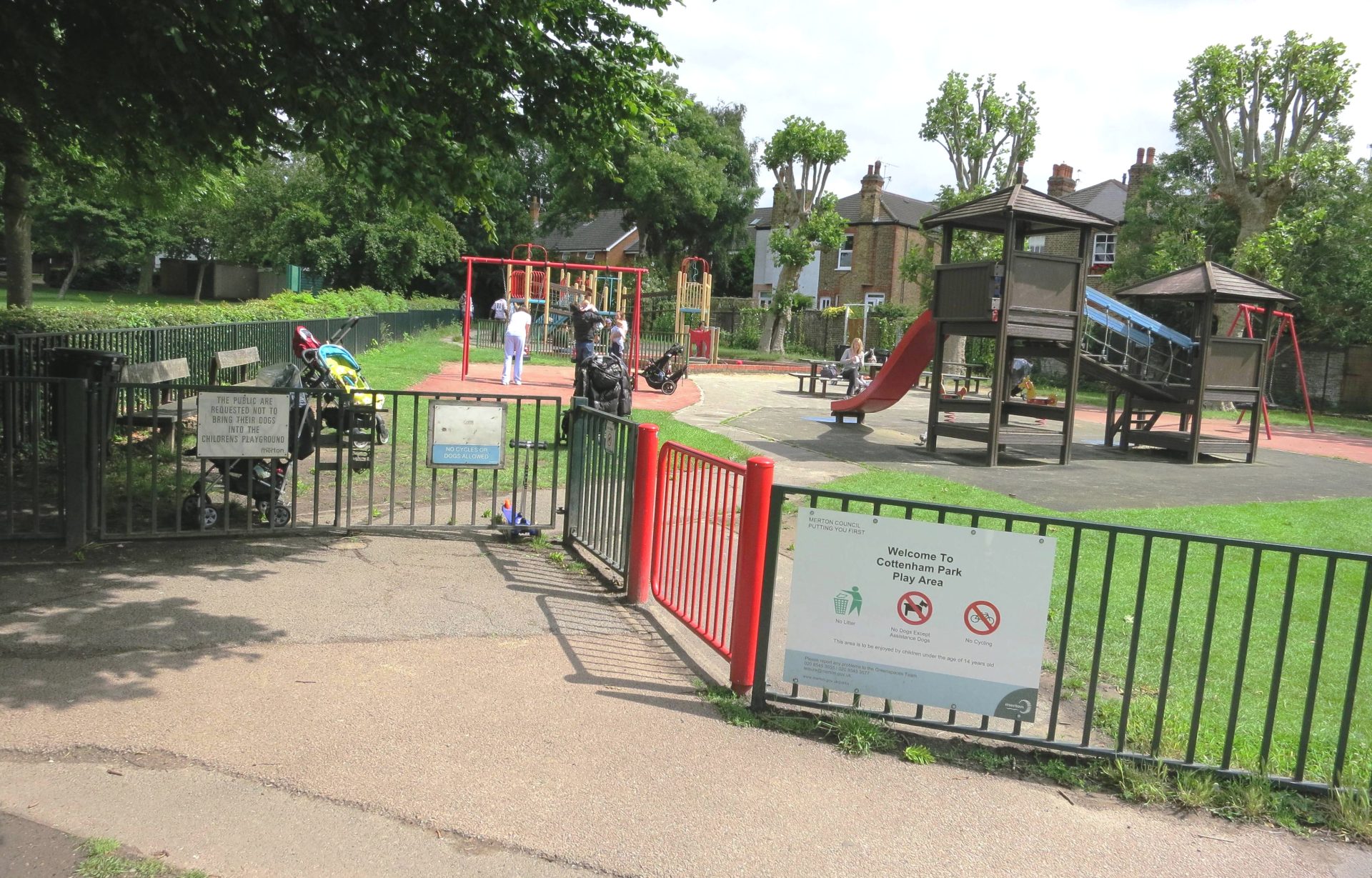The play area in Cottenham Park now occupies the site where I lost my fourteenth summer.

I was playing cricket with some friends and no-one wanted to be wicket keeper. As a bowler I was no wicket keeper. However I nobly volunteered. I stood far too upright and far too close to the stumps. A wide ball came down the leg side (the side near the batsman’s legs, where it is difficult even for a more agile player to see the ball). I lost sight of it. Smack! A full-bodied strike straight off the bat sent the ball into my left eye. For the next three weeks the ball was not the only thing I lost sight of. Home in bed I was suddenly beset with excruciating toothache in that eye. In the days when GPs actually made home visits in the evening, our lovely Dr. Gallaghan, who worked himself so hard that he died of a heart attack in his forties, came out to see me. ‘How many fingers am I holding up?’ he asked, having placed one hand over my right eye. ‘How am I expected to know?’ I replied, ‘my eye is all swollen and closed.’ ‘It isn’t’, was his response. I still feel the cold sweat I immediately broke into on that warm summer evening.
Then it was straight to the Royal Eye Hospital in Surbiton where I spent the best part of the summer of ’56. Doris Day was top of the hit parade with ‘Qu’est sera sera?’. I wasn’t allowed to read, and so had to make do with the radio and the salacious comments of the man in the next bed involving me and the nurses. I didn’t know what he meant, but I did learn the song off by heart. As a child, I should have been in the children’s ward, but the beds weren’t big enough for me. For a few days, when the men’s ward became overcrowded, I was decanted to where I belonged. A box for my feet was placed at the foot of the bed. My feet were still attached to my legs.
When I came out of hospital, Gurney, the boy who had hit the ball, said: ‘You haven’t missed anything’. I could have killed him. The affected eye was always weaker, and, some fifteen to twenty years ago, I finally had an operation, for a cataract. Now it’s fine. I was first given specs at the age of eighteen. The optician told me that by the time I was sixty I wouldn’t need them any more. Rather rashly not taking into consideration that he was himself about that age, I said: ‘When I’m sixty I won’t care’. I felt rather embarrassed. And, of course, when I got to be sixty I did care.
The year after this I proudly became the opening bowler for Garrick House Cricket Club, which was soon to merge with Trinity (Battersea, now Oxley) Cricket Club who occasionally used to play there.
On the North side of the park lies Melbury Gardens, where I had watched the coronation of Queen Elizabeth II, on that miniscule television set.

The modern sports pavilion, boasting showers and a bar, now lies on the site of the small hut which had passed for a changing room. After the game, we would wash in a bowl of cold water, always allowing the oposition first go; then it was off to the Raynes Park Tavern for a jovial evening. It was into this hostelry’s small private bar that, at fifteen, I sneaked for my first half pint of beer. I didn’t like it much, but persevered, for the sake of male cameraderie. In those days Jackie helped the late Eileen Oxley; wife of Stanley, one of the three founders, in whose honour the club was renamed after his death; prepare the teas and do the scoring.
On the South side of the recreation ground lies Cambridge Gardens, which, on one memorable afternoon when I had first opened the batting for my club, I had peppered with boundaries. The despairing bowler said to Charlie Moulder, who was umpiring, ‘he bats like a number eleven (the last man in, who wasn’t usually much good with the bat)’. ‘He is a number eleven’, said Charlie. ‘And I keep feeding him’, bemoaned the bowler.
In my late teens, night after night, I played cricket with Mick Copleston. As we batted until we were out, continuing our innings the next evening, Mick would bat for weeks. Except when it was raining and we played billiards in his front room. He beat me at that too.
Garrick House in Southampton Street, Covent Garden was the home of theatrical publishers Samuel French Ltd. The cricket club was that of the firm. By 1957, no-one playing for the team worked for the publishers. They therefore handed over ownership and all the kit to the current body of men. The club was, a year or two later merged with Trinity (Battersea) Cricket club, for whom a number of the Garrick House players, including me, turned out.

It was Stan Oxley, seated in the centre of this 1958 picture, who was one of the trio who formed the Battersea club, and spent his life as its Secretary, who recruited me, first for the team above, and the following year for the much stronger Trinity. There was then no conflict of interest because Garrick House played on Saturdays at Cottenham Park, and Trinity was a wandering Sunday side.